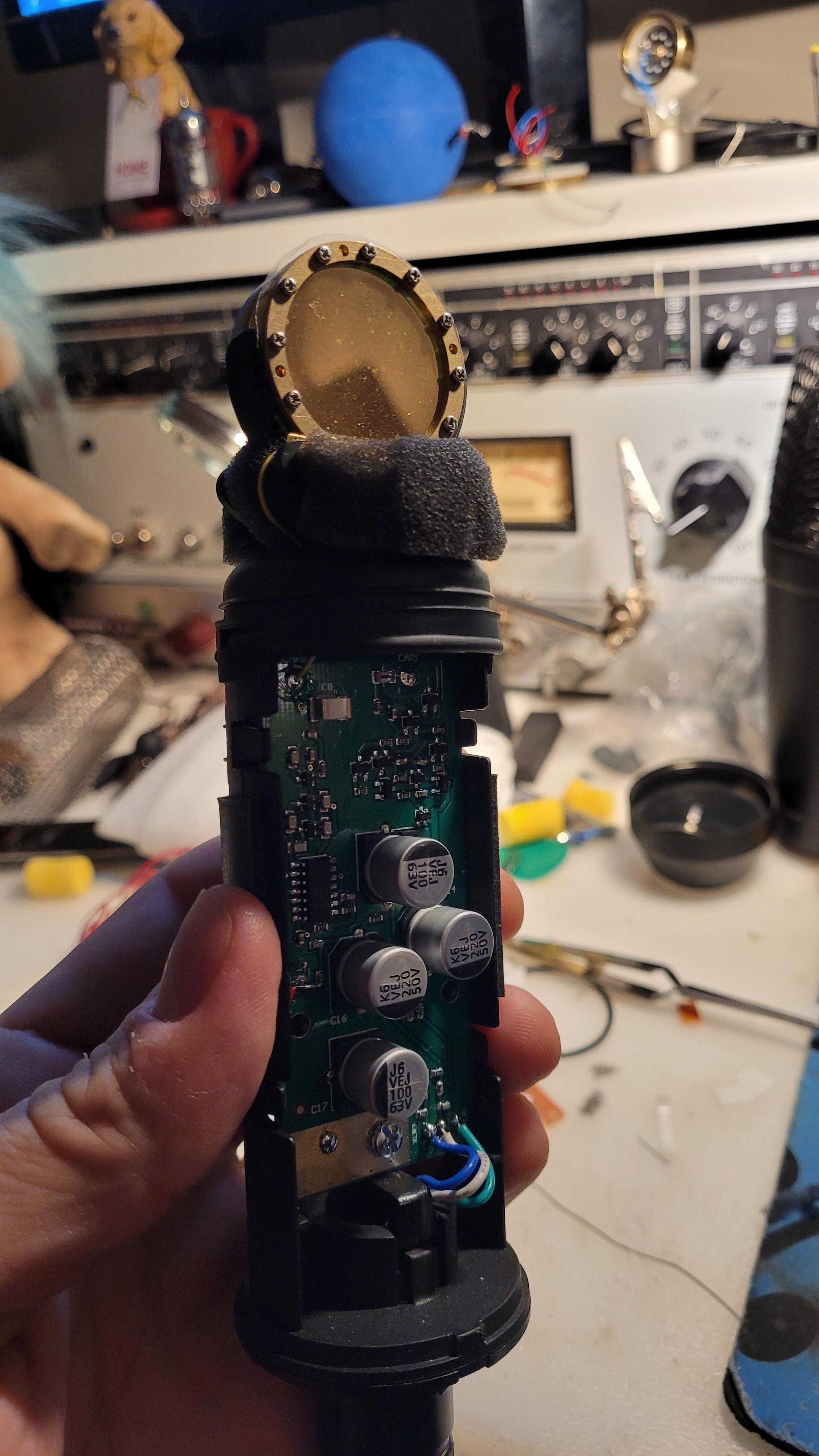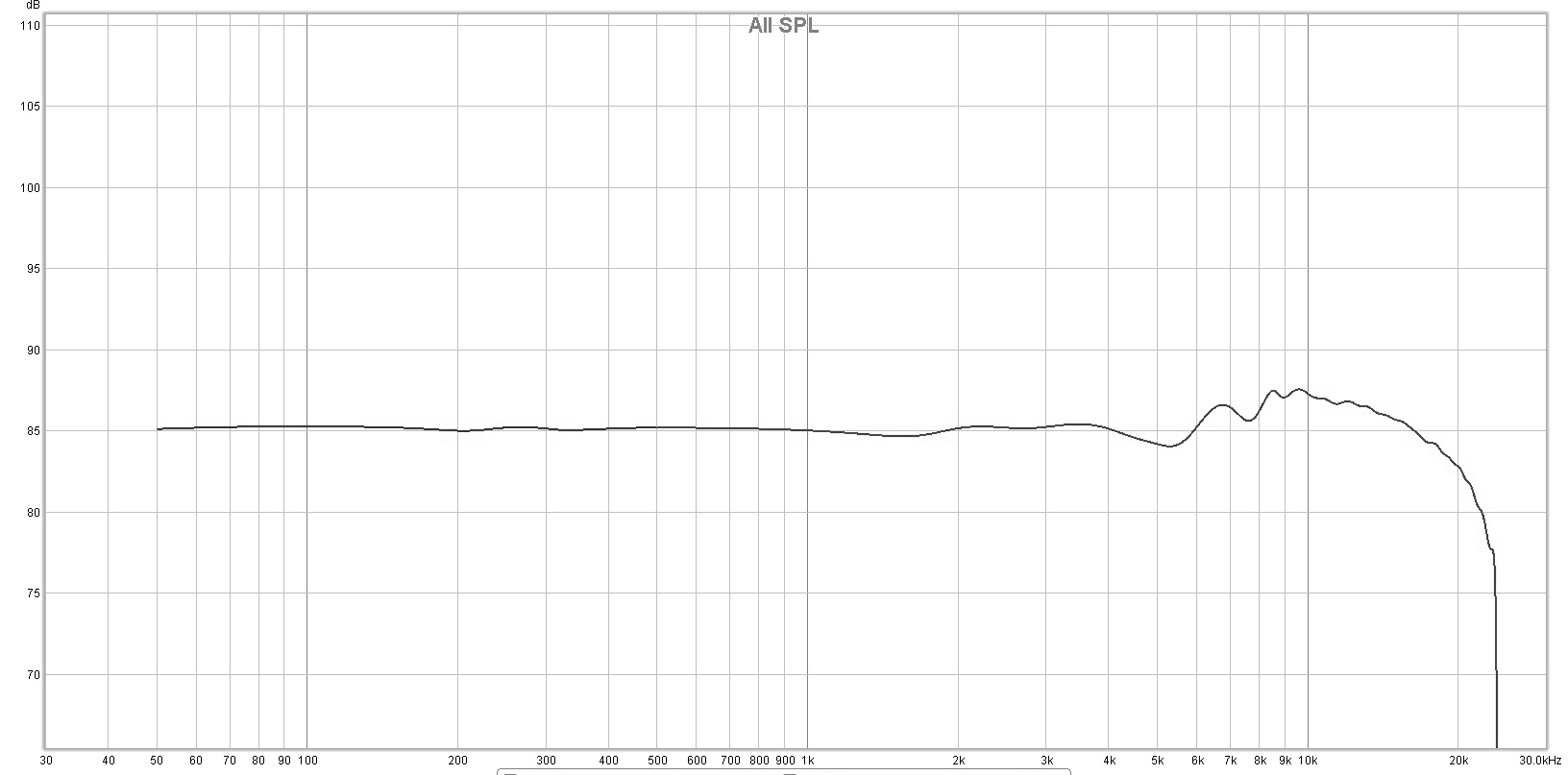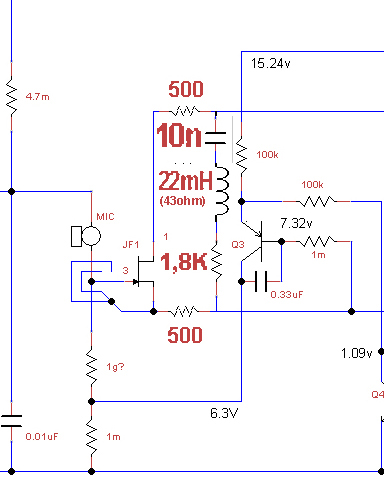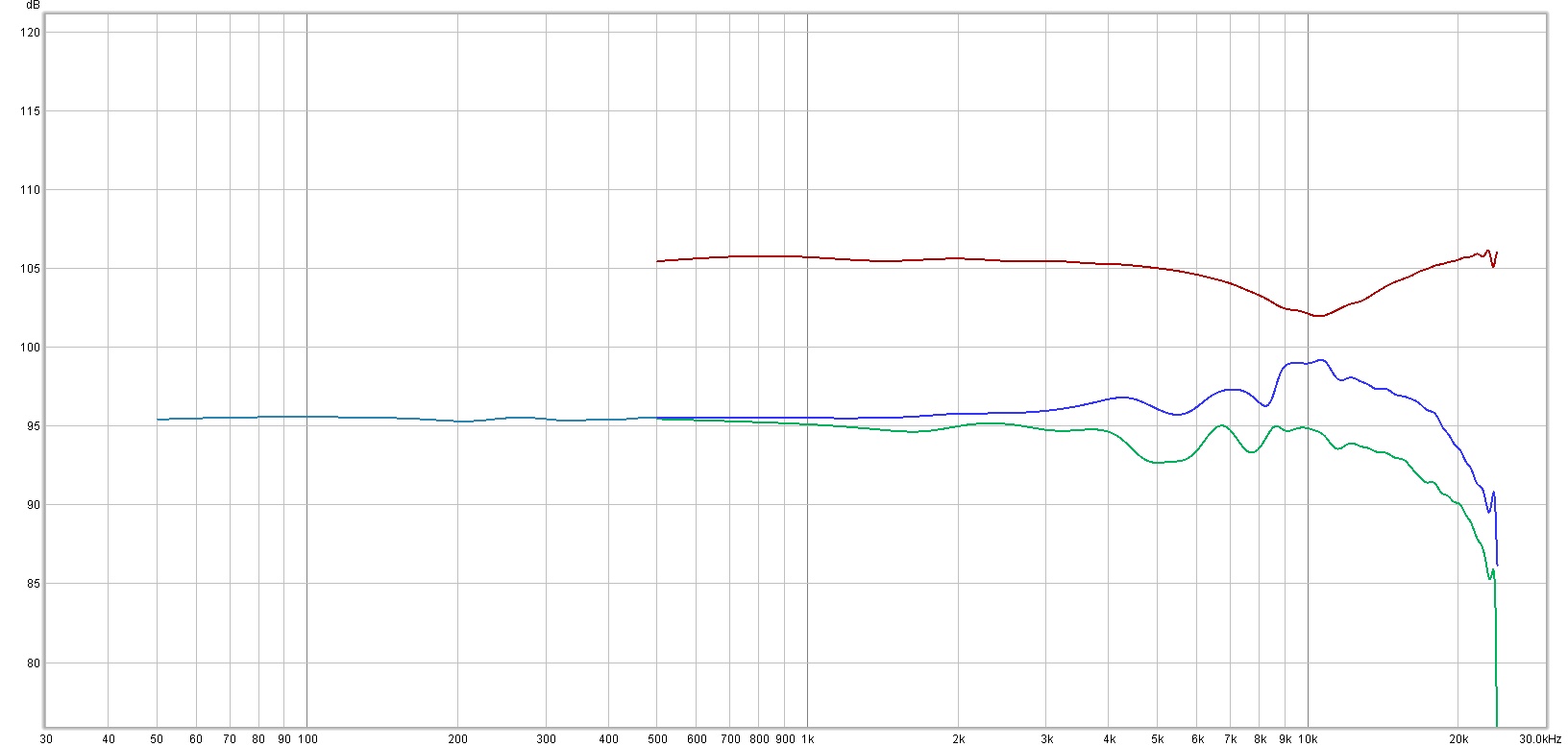rogs
Well-known member
Back to the original 'black' NT1 for a moment ....
I've had mine for about 6 years now, and I've found it a very good mic overall.. and especially useful for doing things like noise floor comparisons.
Recently mine 'seemed?' to be a bit noisier than when it was new.... In theory still under warranty of course, but - like many hobby mic builders - I've had a little dabble inside on occasion, so I'm pretty sure Rode would know I've been in there!
It then occured to me that it was probably actually a bit less sensitive, rather than noisier.... Or maybe both?
Anyway, I removed the preamp PCB for futher investigation - it's only one screw, and then it just unclips.
What I did find is that the measured polarisation voltage - measured at the capule connection - was only around 30V. The voltage at the multiplier output was around 63V - much as expected. Checking the input impedance of my DMM again (10M) I deduced that something else was loading the output.
I then measured something like 10M, resistance wise, across the output cap.
So I unsoldered the output cap, and could see what looked like dirt on the PCB underneath. Quick clean up , resoldered and the voltage across the cap measured around 45V -- much as I would expect. Mic returned to original sensitivity.
I can only deduce that the 'dirt' did in fact present a resistive load across the output capacitor - albeit of a very high value. (c.10M)
While I had the PCB out I thought I'd try and fit in a version of my OPIC 1641 preamp into the empty chassis, just to see how it performed. (couple of photos attached). It actually worked quite well.
The noise floor was only about 3dB above the actual NT1 preamp. Unlike the OPA Alice circuit, my version uses a single opamp, as a single sided audio output (passively impedance balanced for the second output ). The noise figure - without the differential audio output - is around 3dB better.
So, yes, it was a bit worse than the original NT1 preamp, noise wise, but still quite usable. Might become necessary if the original preamp develops any more 'funnies' which prove more difficult to locate, as it gets older? ...
I've had mine for about 6 years now, and I've found it a very good mic overall.. and especially useful for doing things like noise floor comparisons.
Recently mine 'seemed?' to be a bit noisier than when it was new.... In theory still under warranty of course, but - like many hobby mic builders - I've had a little dabble inside on occasion, so I'm pretty sure Rode would know I've been in there!
It then occured to me that it was probably actually a bit less sensitive, rather than noisier.... Or maybe both?
Anyway, I removed the preamp PCB for futher investigation - it's only one screw, and then it just unclips.
What I did find is that the measured polarisation voltage - measured at the capule connection - was only around 30V. The voltage at the multiplier output was around 63V - much as expected. Checking the input impedance of my DMM again (10M) I deduced that something else was loading the output.
I then measured something like 10M, resistance wise, across the output cap.
So I unsoldered the output cap, and could see what looked like dirt on the PCB underneath. Quick clean up , resoldered and the voltage across the cap measured around 45V -- much as I would expect. Mic returned to original sensitivity.
I can only deduce that the 'dirt' did in fact present a resistive load across the output capacitor - albeit of a very high value. (c.10M)
While I had the PCB out I thought I'd try and fit in a version of my OPIC 1641 preamp into the empty chassis, just to see how it performed. (couple of photos attached). It actually worked quite well.
The noise floor was only about 3dB above the actual NT1 preamp. Unlike the OPA Alice circuit, my version uses a single opamp, as a single sided audio output (passively impedance balanced for the second output ). The noise figure - without the differential audio output - is around 3dB better.
So, yes, it was a bit worse than the original NT1 preamp, noise wise, but still quite usable. Might become necessary if the original preamp develops any more 'funnies' which prove more difficult to locate, as it gets older? ...













































